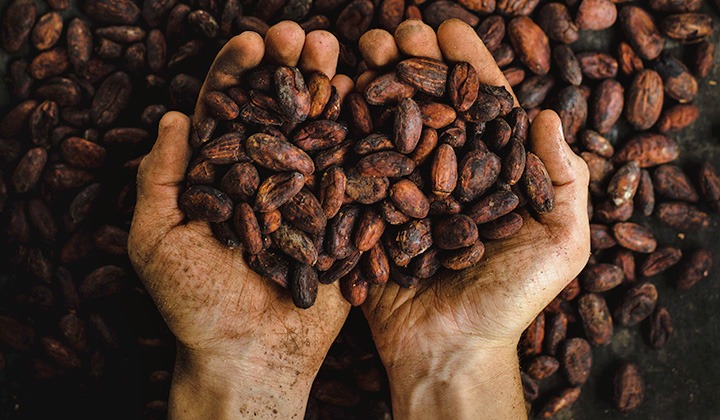On this World Chocolate Day, Simran Sethi, author of Bread, Wine, Chocolate (The Slow Loss of Foods we Love), shares insights over on NewFoodEconomy.org on the state of the chocolate market and highlights a few major problems to better understand how we — chocolate lovers —can play a role in solving them.
Almost three-quarters of all cocoa is produced in Africa. But demand is concentrated in countries with the highest standards of living—Europe and the United States—where cocoa and chocolate are largely considered luxury goods
“The challenges we’re facing in cocoa are not very technical,” says Antonie Fountain, founder of the VOICE Network, an association of non-governmental organizations and trade unions working on sustainability in cocoa. “If you would put a bunch of scientists in a room, you could come up with solutions. Of course it will take time, but it’s not that we don’t know how to do it, technically speaking.”
The “it” Antonie is referring to is poverty alleviation. Poverty begets a host of other problems, among them child labor and vast deforestation.
I don’t know if the consumption figures are right for Switzerland because I don’t know if/how they account for chocolate purchased by tourists and not actually consumed in Switzerland! And you are right – 1oz/day is nearly 23lbs (≈10kg).
It is true that many of the supply-side challenges with respect to quantity can be addressed through farming practices that reduce farm losses – estimated at 30% – from insects and diseases. The overarching challenge is to ensure that farmers are paid enough to cover the costs of doing this work. The related concepts of sustainability and resilience need to extend to markets, both industrial and consumer. Focusing on farm gate prices (not FOB prices at the port) and the percentage of the final retail prices represented by the raw ingredient are a part of that understanding.
I’ll certainly do my part by eating more dark chocolate. The linked article noted that average per capita consumption of chocolate is 10 pounds/year. Even if I kept to my limit of an ounce a day (I often don’t) that’s coming close to 23 pounds annually. I’m not even counting the roasted cacao beans I’ve been known to munch (as I write this) or the cocoa powder for my hot chocolate. Suffice to say that the cocoa growers can count on my support. 😉
One thing that might help cocoa farmers — and possibly help reduce deforestation — is to fund better agricultural practices for growing cocoa. So much of the cocoa crop is lost to spoilage, diseases, etc. They need access to more modern and efficient farming practices, better protection against weather extremes, varieties that are hardy but also flavorful, etc. That takes initial funding, but it would be a step in the right direction and would probably pay for itself over the long run, but these farmers work on such a minimal margin the initial investment is beyond their means, which just keeps them at subsistence. Just my thoughts.
